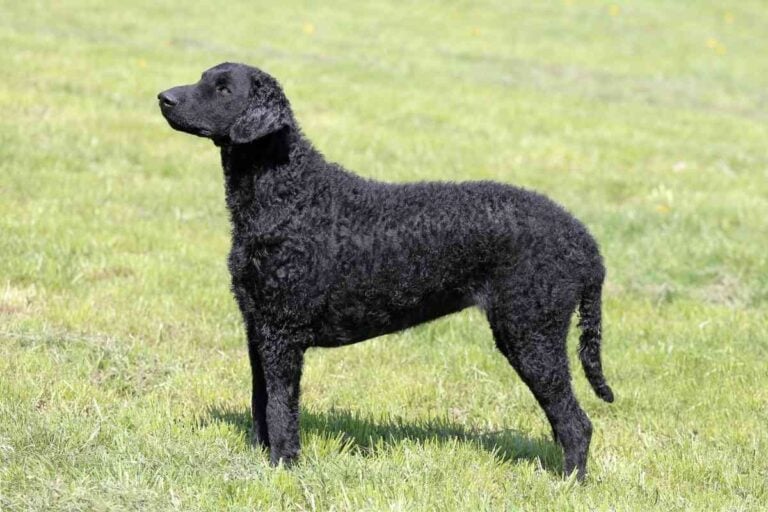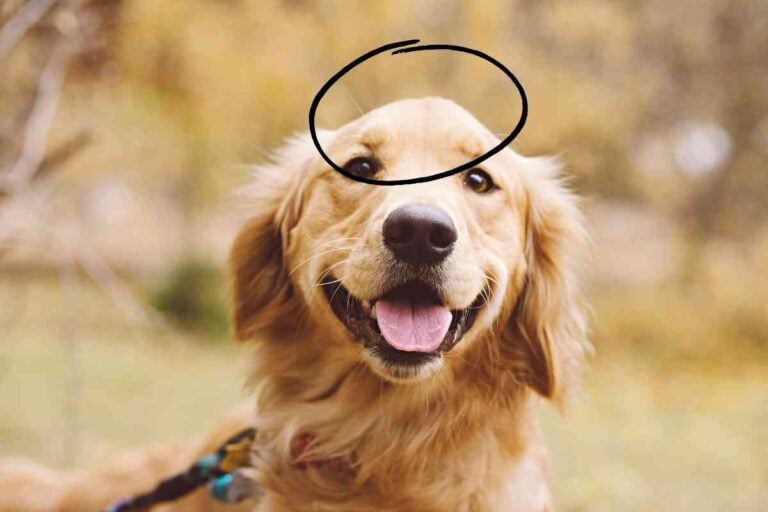More Than 20 Labrador Training Tips: The Ultimate Guide
When you get a Labrador Retriever, they add lots of love and fun to your home. Once they settle, you can start training. Your Labrador dog needs proper training to ensure they have good behavior and habits. It’s good to learn some training tips that can come in handy.
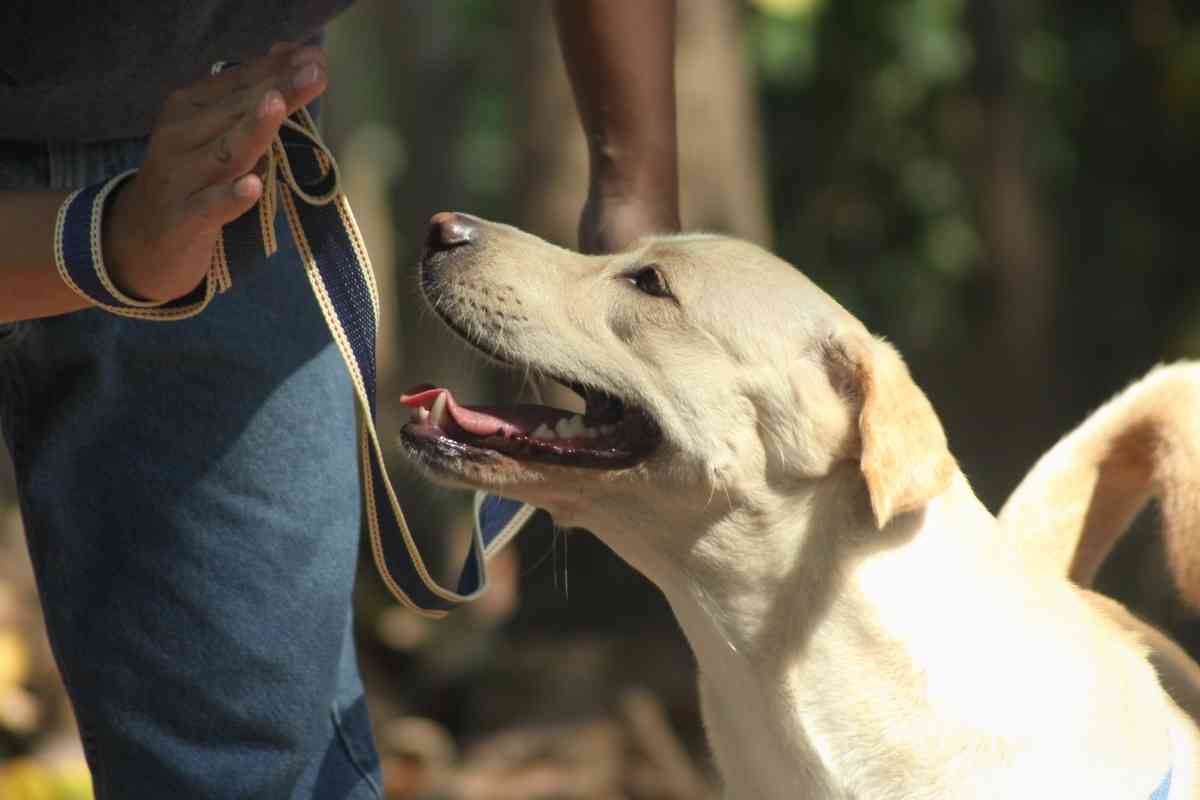
Important Labrador Training Tips
When training your Labrador Retriever, training tips will help you get the right results. Among the top tips is to start training early. Also, keep distractions minimal, lower your demands, keep up with exercising, never skip daily exercise, and make training fun.
Training doesn’t have to be hard and complex. Instead, you can make it fun and something you both look forward to. Following the tips in this article helps create a better bond for you and your dog and results in great habits.
The training tips are often from folks who’ve been where you are when training Labradors. Having a better understanding of the breed helps you get further.
1. Start Building Habits from Day One
Habits are hard to make but easy to maintain, even for Labrador Retrievers. So, it’s better to start training your dog to form positive habits early. Start by training your Labrador puppy from an early age to know when and how to respond to commands.
A good tactic is making training a daily thing that happens at a specific time. Keeping up with such a schedule requires effort from you to get the right results. At first, making habits and creating positive behavior isn’t easy, but the trick is keeping at it.
Eventually, the training will form habits that your Labrador Retriever will master.
2. Keep Up with Distractions Training
Dogs get easily distracted, and Labrador Retrievers aren’t any different. Among the top training stages to take them through is dealing with distractions. That way, you ensure that they stay on track even when you move from familiar to unfamiliar places.
A trained dog can learn to deal with distractions in a familiar place, like your home. But imagine how they feel when you take them to a new area. There’s much to do and see, but you don’t want them running wild and causing havoc.
So, always keep up with distractions training for your Labrador Retriever. Work on taking them to new environments as often as possible. It also helps with socialization and tests how well they learn from all that training.
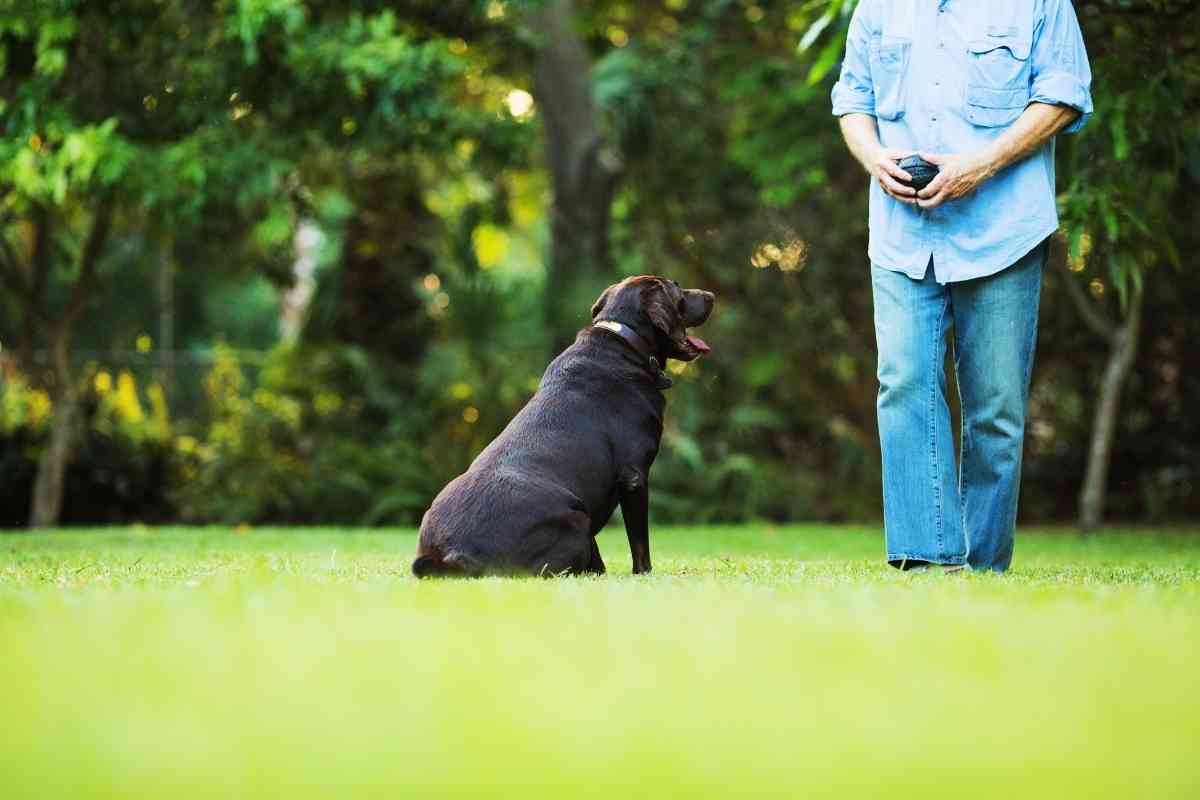
3. Lower your Demands
Yes, you read that right. It’s not uncommon to have high standards set for your Labrador Retriever during training. These are essential. But once in a while, untighten the grip. Lowering demands comes in handy when you move training to another level.
For example, training your dog to sit and stay is standard training. This can go on for about 3 minutes, and then they can move again on your command. However, if this action happens by your side, next will be adding some distance.
If you want to move several meters away from them, start by reducing the sit and stay duration. Essentially, you change the time to about 15 seconds. It’s not easy for them to sit and wait when you add such a factor, so change the time limit first.
4. Never Skip Daily Exercise
One fact about Labrador Retrievers is they require lots of exercise. As a high-energy breed, your dog requires some physical training which is good for their health and well-being. This character is what makes them so lovable and good family pets.
But, one issue you’ll have to deal with if exercise isn’t frequent is boredom. A bored Labrador Retriever seeks ways to entertain itself and can end up being destructive. You’re once calm dog now barks incessantly, chews on things, and digs up your backyard.
It’s better to take them for that walk or a run around the yard daily to avoid such behavioral issues. Since this is a big and active breed, keeping them cooped up inside every day isn’t ideal. Make plans for when it’s time to go outside and stick to it.
5. Minimize Training Sessions
No one likes long and tedious training sessions, not even your Labrador Retriever. Many people make the mistake of making training sessions long and complicated. You want to fit as much training as possible in that time which can be quite overwhelming.
Instead, minimize the training sessions and have fun with your dog afterward. 20-minute training sessions are too much. It’s better to break up that time into 5-minute sessions. That way, your Lab can get used to the training.
Imagine keeping a puppy still for that long. It’s simply an uphill task. Instead, do a few minutes at a time, then continue building up the duration. Still, even for mature Labradors, avoid long sessions since it’s hard to be attentive.
6. Skip Sessions when Necessary
Have you ever woken up in a bad mood and don’t want to do anything for the day? Your Labrador Retriever might feel the same way from time to time. So, while daily training is a good strategy, learn when it’s better to skip a session.
At times training can be hard and cover lots of ground one day, so the next, let your Labrador rest. They might show signs of poor attention spans and moodiness. It’s better to skip the session when necessary so that training doesn’t seem like a punishment.
Instead, let your dog have the day to lie around, run outside or go on an adventure. Trying to force them to keep up with the training can set them back. Therefore, it’s better to learn them and act accordingly.
7. Make Fun Part of the Training
Imagine taking your dog through militarized drills that are so rigid and tough. That can cause them to associate training with tough conditions and cause rebellious behavior. Instead, add some fun aspects to the lessons that make your dog want to participate.
Fun times even help you bond better with your Labrador Retriever. If you notice their attention is shrinking, pull out some toys and have fun. Or, let them run around the yard and get rid of any pent-up energy.
One strategy is coming up with a fun activity to do when training is coming to an end. That is a great way to end the training session. Your Labrador will always know they’re going to have some good times.
8. Physical Punishment is a No-No
Correcting bad behavior is crucial in training. This ensures your Labrador Retriever can distinguish between good and bad. But, physical punishment isn’t the best way to ensure they learn not to repeat the bad habits.
Dogs that experience physical punishment are more likely to show aggression. Training should be a time to teach them positive habits and not turn them into something they want to avoid. Your dog might end up disliking or being on guard during training if it’s when they get punished.
Or, you might end up with an aggressive Labrador that feels intimidated and expresses cowardice during training. That can lead to submissive behavior, especially if they start training when young. This will impact your dog’s esteem and can even change their personality.
9. Sneak Training into Different Things
Are you short on time and still want to train your Labrador Retriever? How about sneaking a little training while doing things around the house or wherever you go?
A busy lifestyle may leave you strapped for time to engage in longer training sessions. This is why you have to be attentive to your Labrador while carrying out normal tasks with them. For instance, feeding time can be a great moment to test and train some commands.
Another great training duration is during a walk. You can stop somewhere and carry out some training for several minutes before you move on. Such moments help reinforce the good habits and lessons you want your Labrador Retriever to learn.
10. Start Socializing them Early
Puppies may end up being in your home for a long time. While it’s good for their health and well-being to be in such a lovely environment, getting them outside is essential. Imagine waiting until they’re a year or 2 to take them outside.
That may end up overwhelming your Labrador socially. It’s better to introduce them to social scenes where strangers and other dogs are around. Early socialization benefits your dog’s social skills and ensures they have good behavior no matter the environment.
Puppies have a natural curiosity, and you can work with that during socialization classes. Let them outside, in the backyard at first, or at the park, to move around and smell things. This is good for their overall growth and development.
11. Have a Set Recall
Labrador Retrievers, like many other dogs, require a recall. Make them recall something that they learn from an early age. This ensures they always respond to your voice no matter where you go together.
Recalls must be enthusiastic and fast. Make them something reliable that your dog responds to no matter what they’re doing. Labradors are curious and will want to explore every part, especially when out in nature.
So, have a full-proof recall that they respond to no matter what they’re up to. This can be crucial, especially at any sign of danger, since your dog will come to you and not proceed to it.
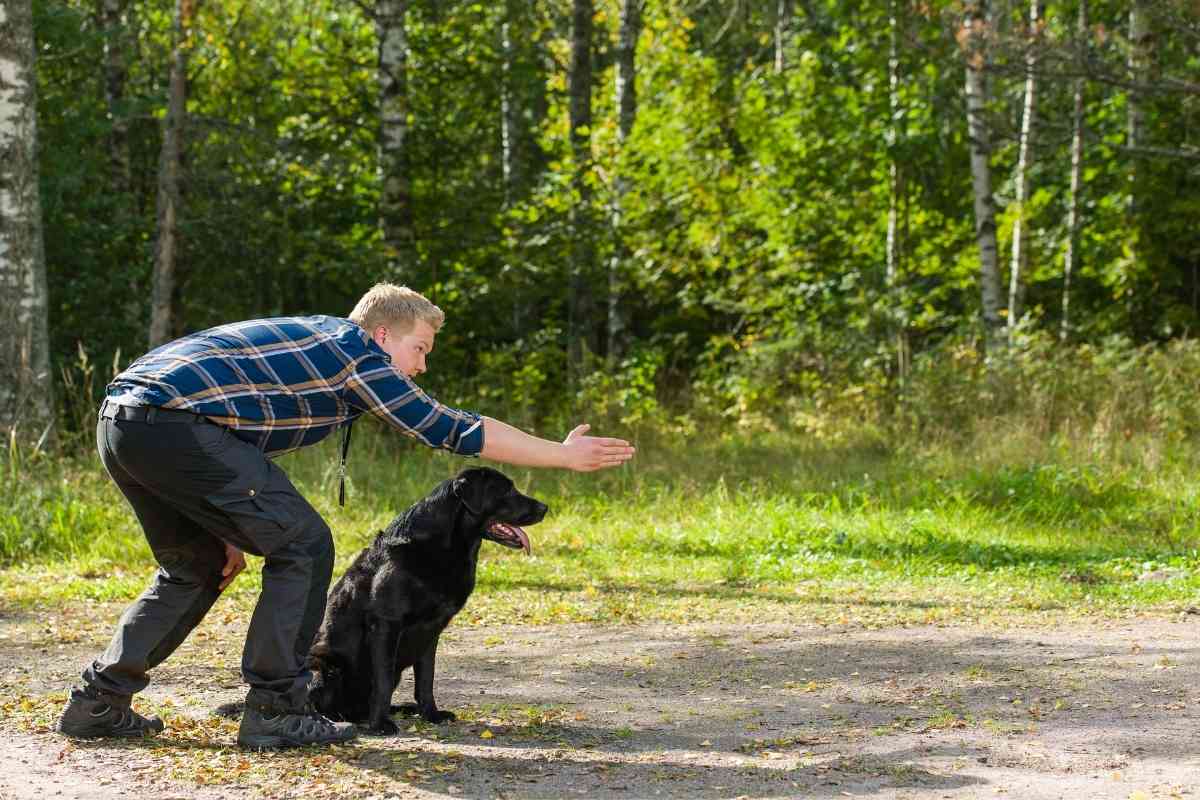
12. Consistency is Key
This might sound obvious for dog owners, but it’s worth repeating. No matter the training you conduct, your dog won’t learn much if you aren’t consistent. So, repetitive and consistent training is the best, especially when training a puppy.
Start by coming up with training strategies and creating a schedule with time stamps. Once this is set, it becomes harder even for you to skip the training schedule. If any lesson is skipped, plan on when to conduct it so that you keep up with the development.
It’s all about forming and maintaining certain habits in your Labrador Retriever. Therefore, consistent training is essential for better results. Just like you need to train if you want to master an activity, the same applies to your pet.
13. Use Simple and Clear Commands
Less is more, and this applies even when training your Labrador Retriever. If you’ve ever come across dog training sessions, you notice instructors strive to keep commands simple and clear. Your dog is more likely to learn and respond to such commands than something long and complex.
Apart from simple and clear commands, avoid adding anything else to it. Say something like ‘ Tommy Come’ if you want your dog to come to you. Adding ‘Tommy, come here now’ is a complex command, and it has more room to change which isn’t ideal for your pet.
The main goal is to get your Lab to understand what you’re communicating. Simple and clear commands are easy for them to understand and master from a young age. They continue to associate the same words with specific responses as they grow since you don’t change them.
14. Keep Track of Training
Training entails more than giving a few commands here and there to your pet. It’s an essential part of their lives, so work on keeping track of every training session. For instance, you can get a dog training log where you write details about each session.
In the log, start by creating a training plan and adding time. Then, log every training session and include all relevant information. You can include when the training started, where it took place, how your dog responded to it and any adjustments needed for effective training.
Eventually, you can look at the record and note if training is having a good impact on your dog or not. If some changes are to be made, you can see where and why this applies. It’s essentially a way to have structured training that yields the right results.
15. Add Some Praise
Again, training is about learning good behavior and habits. But, just because your dog fails at times doesn’t mean you shouldn’t praise them. It always feels good when you reward good behavior with some praise.
So, ensure your training sessions are full of positivity and praises for your Labrador Retriever. Just ensure the praise is at appropriate times so that it isn’t for everything they do. That can water down the worth and impact on your dog.
Well-timed praise is what you want to aim for. Frequent praises may not have the right impact if your dog gets used to them. Plus, you must ensure praise isn’t a bribe or a reward since this can make training difficult.
16. Set Goals
What is the outcome you want to see from the training? Are there specific goals you have in mind that you want to aim for? Write them down.
No matter what it is, human beings who undergo specific training have something they want to accomplish. While your dog might not set goals for themselves, you can set some and follow through. Goals are important because they help chart a course.
For instance, teaching a puppy to SIT and STAY is important from an early age. The end goal is to ensure they don’t grow up jumping up and down or moving everywhere they want. The dog must learn there are moments when they can be free and others when obedience is needed.
17. Practice Outside Management
Socialization is important, but so is outside management. How is your dog outside when there are other dogs or pets? Do they run off barking at the birds in the pond at the park?
Outside management is essential since you have to walk your dog from an early age. If they don’t learn to stay the course and follow every sound, this can be a huge problem.
Therefore, take some training sessions outside and see how your dog responds. Keeping a log helps you keep an account of how every session goes.
18. A Training Lead if your Friend
Are you just beginning your training sessions? It won’t hurt to have a training lead or line at hand. This helps you to keep your dog in line and avoid distractions.
A training lead is important, especially when training your dog outside. They might want to go off and play with other dogs. Or, at times, they get into the treats that you bring along.
The training lead shows your dog that you are in charge and they must follow what you command.
Start by always having a training line at hand when training your dog. The good thing is training lines are light, tangle-resistant, and easy to keep clean. It’s easy to attach it to your dog during training sessions.
19. Use Some Fake Scenarios
Add some fake scenarios to your training sessions. For instance, when training not to jump at people, ask a friend to help you out.
\You can all head to the park and have them walk your dog during training. If they start to want to jump at them, use the commands you’ve taught your dog and see how they respond.
20. It’s Okay to Fail
Leave some room for failure. Everything, including dog commands, has a learning curve. So. It’s best to give your dog time to master the commands.
Learn to be understanding and know that dogs do fail as well. During such times, work on correcting the behavior and not punishment.
21. Have a Consistent Tone
How do you normally speak to your dog? Are you loving and understanding? At the same time, you need to apply command during training. Avoid raising or hardening your tone during training, as this might send the wrong message.
Instead, have the same loving tone, only stronger. While you might need to keep yourself from petting them every time, a harsh tone isn’t the best. Have a consistent welcoming training tone that your Labrador Retriever can enjoy.
22. Get Training
Are you in the process of adopting or buying a Labrador Retriever? Do you intend to train them? Well, get some training as you work on bringing your pet home. Some breeders offer potential owner’s classes to help with proper dog training.
Usually, once you know what you’re doing, you can enjoy a training session with your new pet. So, find a good trainer who can take you through the steps of proper dog training. Full lessons can help you have more confidence in your ability to train your Labrador Retriever.
23. Join a Support group
As a first-time Labrador Retriever owner, it’s not unusual to feel like you’re in over your head. Luckily, there are many support groups that you can join. Check out social media and websites where Labrador Retriever owners and fans congregate.
Such a community helps you feel understood and offers better insight into owning such a pet. Also, this is the best place to learn about any upcoming events or activities involving Labrador Retrievers and their owners in your community.


![How Many Litters Can A Golden Retriever Have? [Safely] 5 How Many Litters Can A Golden Retriever Have? [Safely]](https://retrieveradvice.com/wp-content/uploads/2022/05/How-Many-Litters-Can-A-Golden-Retriever-Have-768x512.jpg)
